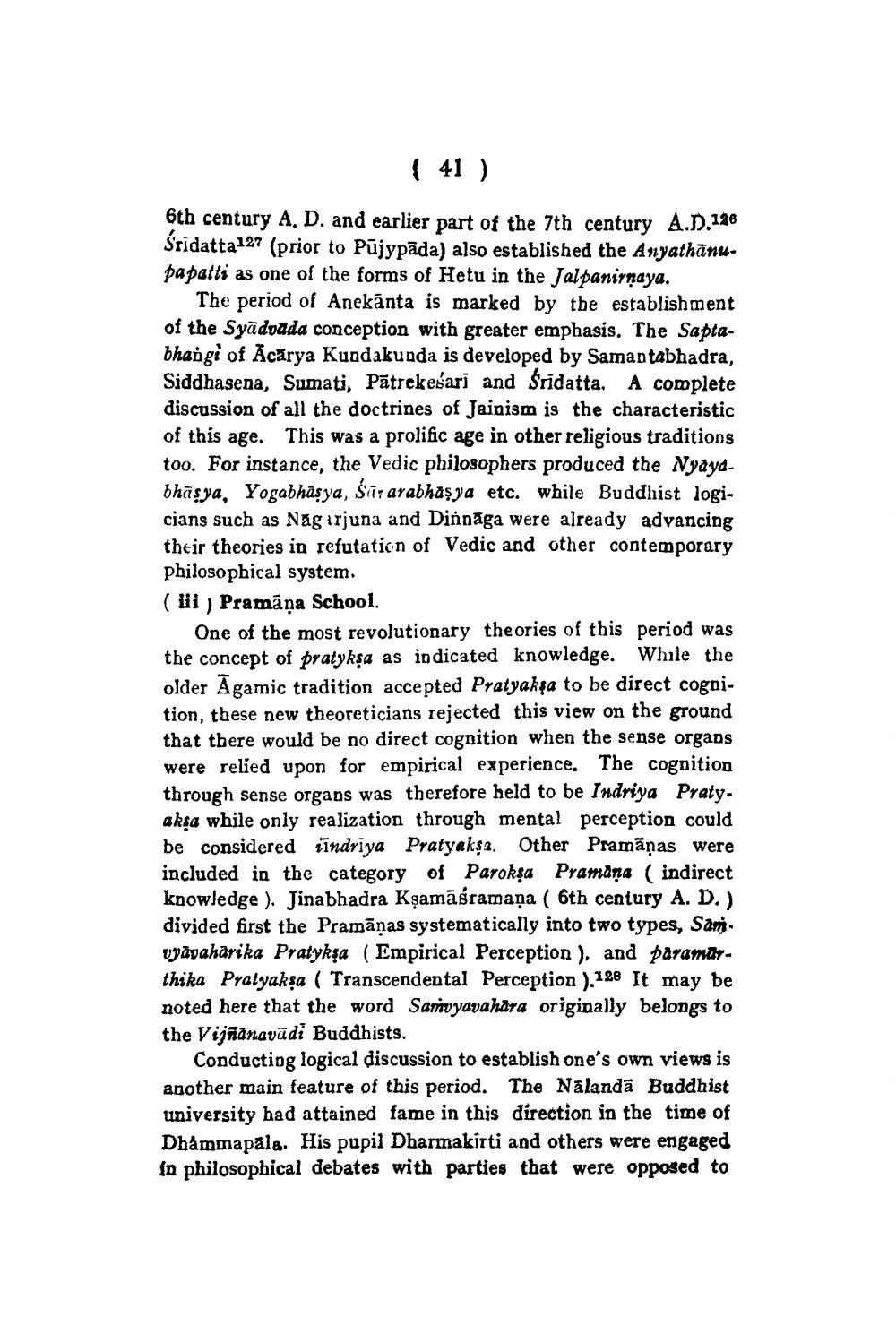________________
( 41 )
6th century A. D. and earlier part of the 7th century A.D.126 Sridatta127 (prior to Pujypada) also established the Anyathāns. papatti as one of the forms of Hetu in the Jalpanirnaya.
The period of Anekānta is marked by the establishment of the Syādvada conception with greater emphasis. The Saptabhangi of Acarya Kundakunda is developed by Samantabhadra, Siddhasena, Sumati, Patrekeśari and fridatta. A complete discussion of all the doctrines of Jainism is the characteristic of this age. This was a prolific age in other religious traditions too. For instance, the Vedic philosophers produced the Nyaydbhāsya, Yogabhâsya, šiit arabhaşya etc. while Buddhist logicians such as Nagarjuna and Dinnāga were already advancing their theories in refutation of Vedic and other contemporary philosophical system. ( lii) Pramāņa School.
One of the most revolutionary theories of this period was the concept of pratykşa as indicated knowledge. While the older Agamic tradition accepted Pratyakşa to be direct cogpition, these new theoreticians rejected this view on the ground that there would be no direct cognition when the sense organs were relied upon for empirical experience. The cognition through sense organs was therefore held to be Indriya Pratyaksa while only realization through mental perception could be considered jindriya Pratyakşı. Other Pramāṇas were included in the category of Paroksa Pramana (indirect knowledge ). Jina bhadra Kşamāśramana ( 6th century A. D.) divided first the Pramānas systematically into two types, Sam vyāvaharika Pratykşa (Empirical Perception), and paramdrthika Pratyakşa ( Transcendental Perception ).128 It may be noted here that the word Samyavahara originally belongs to the Vijanavādi Buddhists.
Conducting logical discussion to establish one's own views is another main feature of this period. The Nalanda Buddhist university had attained fame in this direction in the time of Dhammapala. His pupil Dharmakirti and others were engaged in philosophical debates with parties that were opposed to




